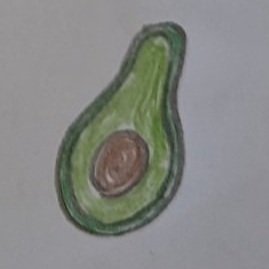Categories
The results of the affinity map with Roundabout stakeholders and online card sort activity had given me some insights into:
How the organisation views its website content
Users’ mental models of the website content
I had some ideas about how Roundabout’s website content might be structured but was still feeling a little overwhelmed by how much needed organising.
Is a polyheirarchy the answer?
There were quite a few items that seemed to belong in more than one category, with no clear consensus. Sometimes placing items into more than one category is helpful. This is called a polyhierarchy and can support different users’ mental models. Laubheimer explains this can make websites easier to navigate as there are more ways to find the content users are looking for. However, he warns that polyhierarchies “should be used judiciously” (2018).
While it is tempting to create a polyhierarchical structure as a solution for those items that seem to belong in multiple categories (Laubheimer 2021), I suspect this approach might be impractical for a small charity like Roundabout. This is because items in more than one place need to be managed and updated in more than one place. It can also result in navigational wayfinding elements that conflict (Laubheimer 2018).
Defining categories
Using the information I’d gathered so far, I had a go at creating the following categories for the site’s global navigation system (Morville and Rosenfeld 2007):
About us
Contact
Donate
Get involved
Do you need help now?
Using these pre-defined categories, I then carried out another card sorting activity. This time I used FigJam to present the cards and categories.
This card sort activity was completed with two participants via Teams. Participants were encouraged to think aloud while sorting cards into the categories.
Card sorting results
Participant 2
Participant 1
The results of these two card sorting exercises were very similar. Although the sample size was very small, this does indicate that these groupings are intuitive for users.
From these results, I’ve created a first draft of a possible site map.
This draft site map (which you can select to enlarge) shows content organised under a suggested global (primary) and local (secondary) navigation system.
Reflections
What went well
I’ve delved into the information architecture (IA) a lot over the last few weeks. It’s an area of UX that I’m really interested in and have been keen to explore since starting the MA. I think it aligns well with my existing experience from working in e-learning. Focusing on the IA aspect of this project has enabled me to explore IA and develop the skills and experience I have in this area.
According to Cardello, “IA is the information backbone of the site” (2014). I hope that the time I’ve spent focusing on IA will give Roundabout’s website a strong backbone to build upon, making it easier to design the other elements of the prototype such as the visual design and content.
What could be improved
While spending so much time on the IA has been very beneficial for me personally and for Roundabout, it has meant that I’m a little behind in the other tasks I need to complete for the module assessment. It’s not impossible to get back on track but I do need to get a move on now!
Future plans
I’m keen to sketch some more wireframes, incorporating what I’ve learned about users like Jackie, user flows, and IA. So that’s my next step: to put what I’ve learned into some wireframe sketches.
-
CARDELLO, Jen. 2014. ‘The Difference Between Information Architecture (IA) and Navigation’. Nielsen Norman Group [online]. Available at: https://www.nngroup.com/articles/ia-vs-navigation/ [accessed 22 Mar 2023].
LAUBHEIMER, Page. 2018. ‘Nielsen Norman Group: UX Research, Training, and Consulting’. Nielsen Norman Group [online]. Available at: https://www.nngroup.com/articles/polyhierarchy/ [accessed 31 Mar 2023].
LAUBHEIMER, Page. 2021. ‘How to Handle Category Outliers in Your IA’. Nielsen Norman Group [online]. Available at: https://www.nngroup.com/articles/ia-category-outliers/ [accessed 31 Mar 2023].
MORVILLE, Peter and Louis ROSENFELD. 2007. Information Architecture for the World Wide Web. 3rd ed. Sebastopol, CA: O’Reilly.
Thank you for reading.















